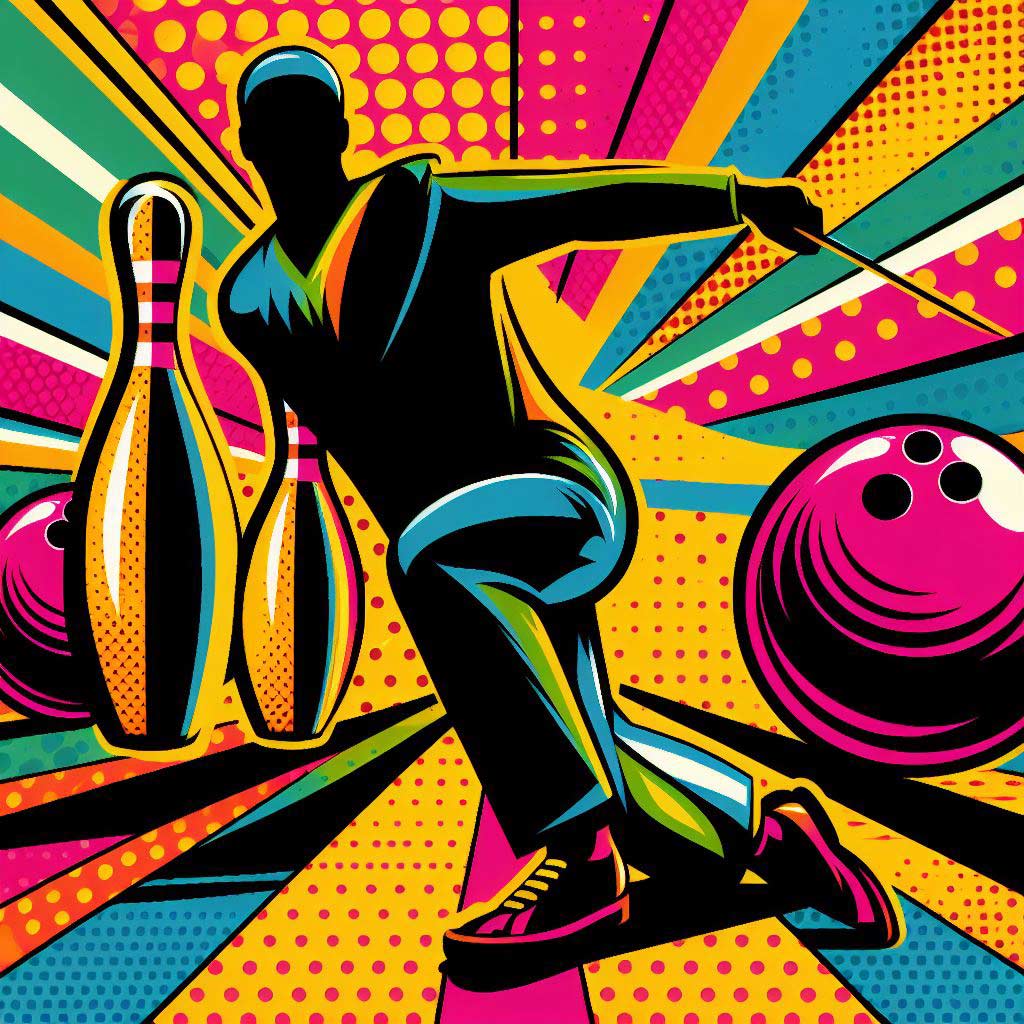Candlepin bowling is a unique variation of the classic bowling sport that originated in New England in the late 19th century. Unlike the more widely known ten-pin bowling, candlepin bowling features slender, tall pins and smaller, lighter balls – creating a gameplay experience that is distinctly challenging yet endlessly entertaining.
Whether you’re an experienced candlepin bowler or completely new to the sport, understanding the core rules and mechanics is crucial to fully enjoying this one-of-a-kind game.
In this comprehensive guide, we’ll cover everything you need to know about candlepin bowling rules, from the basic setup to advanced strategies and tournament play.
The Basics of Candlepin Bowling
To begin, let’s take a closer look at the key equipment and lane dimensions that define the candlepin bowling experience:
The Candlepin Balls
The bowling balls used in candlepin are significantly smaller and lighter than their ten-pin counterparts. A standard candlepin ball weighs just 2 lbs 7 oz, compared to the 10-16 lbs typical of a ten-pin ball. The ball diameter is also reduced, measuring around 4.5 inches across.
This diminutive ball size serves a practical purpose – it needs to fit within the narrow, deep finger holes that are a hallmark of candlepin bowling. The lightweight design also places a greater emphasis on finesse, spin, and accuracy over pure power.
The Candlepins
Where a traditional ten-pin bowling setup features 10 large, squat pins, candlepin bowling utilizes 10 thinner, taller pins that resemble candles. Each candlepin stands 15.75 inches tall and has a diameter of just 2.75 inches at the base.
This elongated, slender pin profile makes candlepins more unstable and prone to toppling, presenting an extra challenge for bowlers. Knocking down all 10 candlepins with a single ball is an incredibly difficult feat, adding to the suspense and skill required to achieve a “strike.”
The Bowling Lane
Candlepin bowling lanes maintain the standard 60-foot length of a ten-pin lane, but the width is reduced to just 41.5 inches. This narrower, more confined lane creates a more technical, precision-oriented experience compared to the wider, more forgiving ten-pin setup.
Number of Players and Gameplay
A standard candlepin bowling game involves 1-6 players per lane. Each player bowls 3 balls per frame, with 10 frames making up a complete game.
This three-ball per frame format is the key distinction from ten-pin bowling, which only allows 2 balls per frame. The extra ball gives candlepin players more chances to knock down pins, but also raises the difficulty level significantly.
Scoring in Candlepin Bowling
Now that we’ve covered the basic equipment and setup, let’s dive into the specifics of how scoring works in candlepin bowling:
Scoring a Frame
On each frame, a player has 3 chances to knock down as many pins as possible using their 3 balls. The scoring works as follows:
- If a player knocks down all 10 pins with their first ball, it’s called a “strike” and they earn 30 points for that frame.
- If a player fails to knock down all 10 pins on the first ball, they can attempt to clear the remaining pins with their second and third balls. Any pins knocked down on the second or third ball are awarded points.
- If a player clears all 10 pins using their second or third ball, it’s called a “spare” and they earn 10 points for that frame, plus a bonus for the number of pins knocked down on their next ball.
- If a player fails to clear all 10 pins by the end of their 3 balls, their score for that frame is simply the total number of pins they were able to knock down.
Calculating the Total Score
The total score for a candlepin bowling game is determined by adding up the points earned in each of the 10 frames. However, the bonus points earned for strikes and spares can significantly impact the overall score.
Here’s how the bonus points work:
- If a player rolls a strike, they earn 30 points for that frame, plus a bonus equal to the number of pins knocked down on their next two balls.
- If a player rolls a spare, they earn 10 points for that frame, plus a bonus equal to the number of pins knocked down on their next ball.
So, a player who bowls a strike followed by two more strikes would earn a total of 90 points for those 3 frames (30 + 30 + 30). And a player who rolls a spare followed by knocking down 7 pins on their next ball would earn 27 points for that frame (10 + 7 + 7).
The final score is calculated by adding up the points earned in each frame, including any bonus points from strikes and spares.
Advanced Candlepin Bowling Strategies
While the basic rules of candlepin bowling are relatively straightforward, there are a number of more advanced techniques and strategies that experienced players employ to maximize their scores. Let’s take a closer look at some of these:
Controlling Ball Spin and Curve
One of the key skills in candlepin bowling is learning to control the spin and curve of the ball. By imparting the right amount of side spin or hook, players can dramatically influence where the ball hits the pins and improve their chances of knocking them all down.
Mastering spin control takes practice, but some general tips include:
- Gripping the ball with your fingers and thumb positioned slightly off-center can help generate side spin.
- Releasing the ball with a slight twist of the wrist can put backspin or hook on the ball.
- Adjusting your approach angle and release point can also affect the ball’s trajectory.
Optimizing Your Stance and Delivery
In addition to ball control, the way a player positions their body and delivers the ball can have a big impact on accuracy and consistency. Some key elements of an effective candlepin bowling stance and delivery include:
- Maintaining a stable, balanced body position with your weight evenly distributed.
- Keeping your arm swing short and compact to improve precision.
- Timing your release to maximize power and control.
- Using your non-bowling hand to help guide the ball’s direction on release.
Targeting Specific Pins
Experienced candlepin bowlers often develop strategies for selectively targeting certain pins on the lane. This can involve aiming to knock down a specific pin or group of pins in order to set up a strike or spare on the next ball.
Some common pin targeting techniques include:
- Going for a “4-6-10” split by hitting the 4 pin to topple the 6 and 10 pins.
- Deliberately leaving a “corner pin” (1, 3, 7, or 10 pin) standing to create an easier opportunity for a spare.
- Using spin to “split the middle” and knock down the 5 and 8 pins simultaneously.
Developing this type of strategic pin targeting takes a lot of practice and experience, but can pay major dividends in terms of boosting your overall candlepin bowling scores.
Etiquette and Rules of Conduct
In addition to the gameplay mechanics, there are also a number of important etiquette and conduct guidelines that candlepin bowlers should be aware of:
Proper Ball Return Etiquette
When it’s not your turn to bowl, you should always be attentive and ready to retrieve your ball from the return immediately after it comes back. Avoid lingering or socializing in the approach area, as this can distract or delay other players.
Additionally, be mindful of not stepping on or interfering with the ball return mechanism itself, as this could potentially cause damage or create a safety hazard.
Foul Lines and Lane Maintenance
It’s crucial to keep both feet behind the foul line when delivering your ball. Stepping over the line will result in a foul, which forfeits your current frame’s score.
Players should also avoid touching or adjusting any of the lane’s mechanical components, as this could throw off the carefully calibrated playing surface. If you notice an issue with the lane, notify the facility staff right away.
Sportsmanship and Conduct Expectations
Candlepin bowling is meant to be an enjoyable, social activity. As such, good sportsmanship and respectful conduct are expected of all players. This includes:
- Avoiding excessive noise, music, or other distractions that could interfere with other bowlers
- Refraining from inappropriate language or unsportsmanlike behavior
- Congratulating your opponents on good shots and accepting defeats gracefully
- Cleaning up after yourself and disposing of any trash or debris
By following these simple etiquette guidelines, you can help ensure that everyone has a positive, fun experience on the candlepin lanes.
Candlepin Bowling Variations and Tournaments
While the standard format we’ve covered so far represents the most common way to play candlepin bowling, there are also a number of interesting variations and specialized tournament formats that are worth exploring:
Candlepin Bowling Formats
In addition to the traditional individual format, candlepin bowling can also be played in team, doubles, and other group configurations. Some popular variations include:
- Team Play: 2-6 players per team, with each player bowling 1 ball per frame.
- Scotch Doubles: 2-player teams, with partners alternating shots each frame.
- Baker Format: Teams of 4-5 players, with each player bowling 1 ball per frame.
These formats add an extra layer of strategy and teamwork to the candlepin bowling experience.
Candlepin Bowling Tournaments
There is a robust candlepin bowling tournament circuit, with competitions taking place at both the regional and national levels. Some of the most prestigious candlepin bowling events include:
- The World Candlepin Bowling Championship
- The New England Regional Candlepin Bowling Tournament
- State and Provincial Championships (e.g. Massachusetts, Maine, New Brunswick)
These tournaments attract the top professional and amateur candlepin bowlers from across North America, showcasing the highest levels of skill and competition in the sport.
Tournament formats can vary, but often involve a combination of qualifying rounds, bracket-style matchups, and head-to-head elimination. Prizes and purses can be substantial, providing a strong incentive for bowlers to hone their craft.
Even if you don’t aspire to compete at the tournament level, attending or watching these events can be a great way to pick up new techniques and strategies from the best candlepin bowlers in the world.
Conclusion
Candlepin bowling is a unique and incredibly entertaining variant of the classic bowling sport. While the rules and gameplay may seem a bit different from traditional ten-pin bowling, the core objective remains the same – to knock down as many pins as possible with skillful, strategic play.
By understanding the nuances of candlepin ball and pin design, scoring mechanics, advanced techniques, and proper etiquette, you’ll be well on your way to becoming an accomplished candlepin bowler. And who knows – with enough practice, you may even find yourself competing in one of the sport’s prestigious regional or national tournaments!
So the next time you have the opportunity to try out candlepin bowling, embrace the challenge and get ready for an unforgettable experience. With its distinctive equipment, captivating gameplay, and passionate community of enthusiasts, candlepin bowling is a true New England tradition that deserves to be experienced firsthand.





